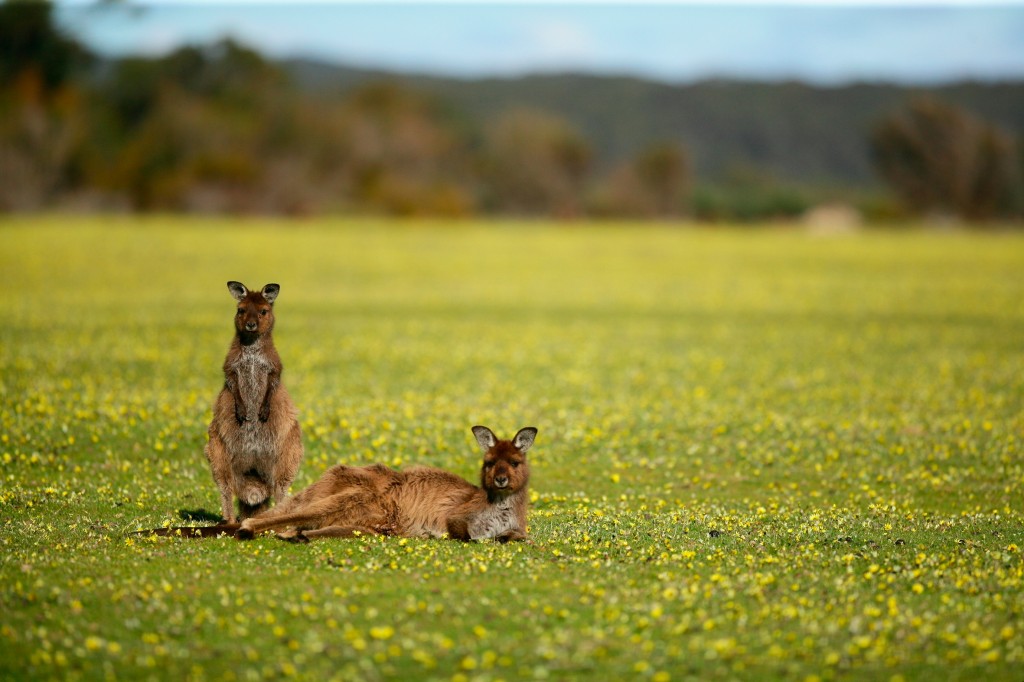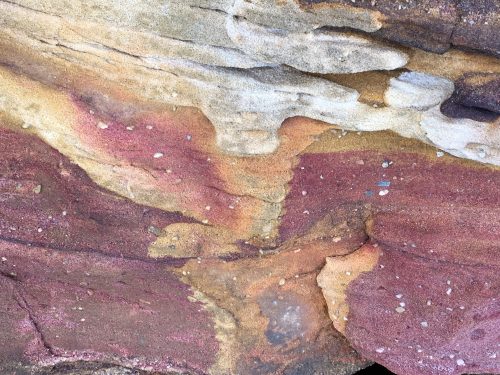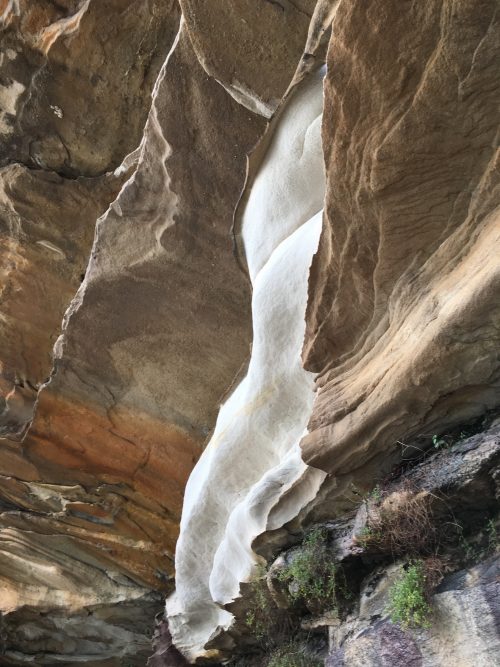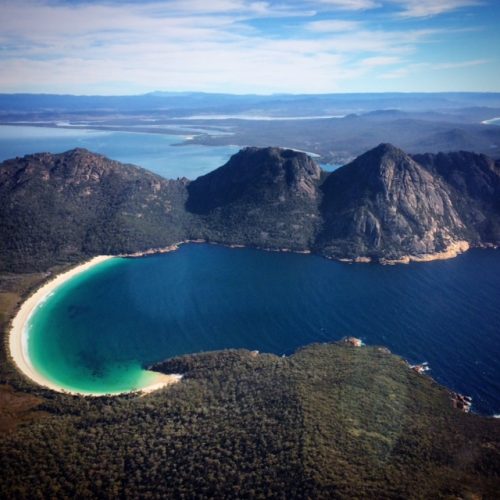
We sailed along the Seven Seas
With Bugis at our back
Sulu,Timor, Celebes,
And lovely Rajampat.
We pitched across the Wallace Line
And dropped down in to Oz.
We lingered on the reef’s deep blue
And swam in coral seas,
Then set our sights on Uluru,
Wombats and wallabies.

The story of much of Australia is the story of sandstone. Arrive in Sydney and it's all around you - in buildings proud and humble, in the pavement, in its many beaches. It comes in all colors and so the buildings are red and yellow, the beaches white and black, the art - contemporary sandstone sculpture or Aboriginal ochred painting - in all of these hues.
But, while beautiful, sandstone bedrock produces insipid soil and a poor growing environment and so vegetation, wildlife and humans have had to adapt and they have done so in fascinating, and sometimes shocking, ways. A kangaroo doesn't hop but he springs, covering long distances and expending minimal energy. When, in the outback, temperatures rise above certain levels, a kangaroo will eject the joey from her pouch so that her own chances of survival increase. And if rains fail and graze is sparse, a roo can even put her pregnancy on pause until conditions improve.
Similarly, indigenous tree species cannot afford to lose their leaves to herbivores and so they defend themselves with toxins. The many species of eucalyptus emit their oil in a faint blue haze (hence the name Blue Mountains) and provide koalas, with digestive tracts adapted to processing these toxins, their diet.
And, finally, sandstone has played a crucial role in Aboriginal culture. The ancient rock art found etched into soft sandstone tells their stories and provides a map of their relationships with the sky, the land, earth's creatures and with each other. And because the sandstone is so soft, these etchings - some 20,000 years old or more - have been redrawn through time and across country and have survived.
Lesson #2: Everything natural and cultural takes its shape from the rock upon which it lies.
" ["post_title"]=> string(36) "Lessons From the Land Down Under (2)" ["post_excerpt"]=> string(0) "" ["post_status"]=> string(7) "publish" ["comment_status"]=> string(6) "closed" ["ping_status"]=> string(6) "closed" ["post_password"]=> string(0) "" ["post_name"]=> string(14) "lessons-land-2" ["to_ping"]=> string(0) "" ["pinged"]=> string(0) "" ["post_modified"]=> string(19) "2016-11-14 12:20:23" ["post_modified_gmt"]=> string(19) "2016-11-14 17:20:23" ["post_content_filtered"]=> string(0) "" ["post_parent"]=> int(0) ["guid"]=> string(31) "http://lisalindblad.com/?p=5862" ["menu_order"]=> int(0) ["post_type"]=> string(4) "post" ["post_mime_type"]=> string(0) "" ["comment_count"]=> string(1) "0" ["filter"]=> string(3) "raw" } }

